Automatic Recognition of Beam Attachment for Massive MIMO System in Densely Distributed Renewable Energy Resources
Abstract
1. Introduction
- Proposing an approach to recognize beam attachment for massive MIMO in multiple heterogenous cell environments.
- Utilizing lazy learning approach to improve the precise recognition of beam-attachment index in 5G and 6G networks.
- Reducing the complexity of the recognition process by reducing the number of required environmental features. This improves the efficiency of the algorithm and reduces the required amount of memory.
2. Overview and Challenges
2.1. Beamforming and M-MIMO
2.2. Challenges in 5G and 6G Development
3. Edge Intelligence and 5G Networks in RESs
3.1. Edge Computing
3.2. 5G Networks in Distributed RESs
4. Related Work
5. System Model
5.1. Considered Model and Assumptions
5.2. Connection Procedures
6. Beam-Attachment Index Recognition
6.1. Definitions and Approach
6.2. Classifiers Comparison
6.2.1. KStar Classifier
6.2.2. KNN Classifier
6.2.3. Classifier Performance Evaluation
- True Positive Rate (TPR).
- False Positive Rate (FPR).
- Precision.
- F-Measure.
7. Simulation and Evaluation
7.1. Setup and Parameters of Experiments
7.2. Classifier Evaluation
7.3. Recognition of Beam-Attachment Map
7.4. Discussion
8. Conclusions
Funding
Institutional Review Board Statement
Informed Consent Statement
Data Availability Statement
Acknowledgments
Conflicts of Interest
References
- Andreev, S.; Galinina, O.; Pyattaev, A.; Gerasimenko, M.; Tirronen, T.; Torsner, J.; Sachs, J.; Dohler, M.; Koucheryavy, Y. Understanding the IoT connectivity landscape: A contemporary M2M radio technology roadmap. IEEE Commun. Mag. 2015, 53, 32–40. [Google Scholar] [CrossRef]
- Firouzi, R.; Rahmani, R. 5G-Enabled Distributed Intelligence Based on O-RAN for Distributed IoT Systems. Sensors 2022, 23, 133. [Google Scholar] [CrossRef]
- Rinaldi, F.; Raschella, A.; Pizzi, S. 5G NR system design: A concise survey of key features and capabilities. Wirel. Netw. 2021, 27, 5173–5188. [Google Scholar] [CrossRef]
- Tipantuña, C.; Hesselbach, X. Adaptive energy management in 5G network slicing: Requirements, architecture and strategies. Energies 2020, 13, 3984. [Google Scholar] [CrossRef]
- Dragičević, T.; Siano, P.; Prabaharan, S.S. Future generation 5G wireless networks for smart grid: A comprehensive review. Energies 2019, 12, 2140. [Google Scholar]
- Kabalci, Y. 5G mobile communication systems: Fundamentals, challenges and key technologies. In Smart Grids and Their Communication Systems; Springer: Singapore, 2018; pp. 329–359. [Google Scholar]
- Valtanen, K.; Backman, J.; Yrjölä, S. Blockchain-powered value creation in the 5G and smart grid use cases. IEEE Access 2019, 7, 25690–25707. [Google Scholar] [CrossRef]
- Letaief, K.B.; Shi, Y.; Lu, J.; Lu, J. Edge artificial intelligence for 6G: Vision, enabling technologies, and applications. IEEE J. Sel. Areas Commun. 2021, 40, 5–36. [Google Scholar] [CrossRef]
- Rong, B. 6G: The next horizon: From connected people and things to connected intelligence. IEEE Wirel. Commun. 2021, 28, 8. [Google Scholar] [CrossRef]
- Shi, Y.; Yang, K.; Jiang, T.; Zhang, J.; Letaief, K.B. Communication-efficient edge AI: Algorithms and systems. IEEE Commun. Surv. Tutor. 2020, 22, 2167–2191. [Google Scholar] [CrossRef]
- Yang, K.; Jiang, T.; Shi, Y.; Ding, Z. Federated learning via over-the-air computation. IEEE Trans. Wirel. Commun. 2020, 19, 2022–2035. [Google Scholar] [CrossRef]
- Chikha, H.B.; Almadhor, A.; Khalid, W. Machine learning for 5G MIMO modulation detection. Sensors 2021, 21, 1556. [Google Scholar] [CrossRef]
- Ben Chikha, W.; Chaoui, S.; Attia, R. Identification of superposed modulations for two-way relaying MIMO systems with physical-layer network coding. IET Commun. 2017, 11, 225–231. [Google Scholar] [CrossRef]
- Roth, J.D.; Tummala, M.; McEachen, J.C. Efficient system geolocation architecture in next-generation cellular networks. IEEE Syst. J. 2017, 12, 3414–3425. [Google Scholar] [CrossRef]
- Zhai, X.; Chen, X.; Xu, J.; Ng, D.W.K. Hybrid beamforming for massive MIMO over-the-air computation. IEEE Trans. Commun. 2021, 69, 2737–2751. [Google Scholar] [CrossRef]
- Zhu, G.; Huang, K. MIMO over-the-air computation for high-mobility multimodal sensing. IEEE Internet Things J. 2018, 6, 6089–6103. [Google Scholar] [CrossRef]
- Carrillo, D.; Kalalas, C.; Raussi, P.; Michalopoulos, D.S.; Rodríguez, D.Z.; Kokkoniemi-Tarkkanen, H.; Ahola, K.; Nardelli, P.H.; Fraidenraich, G.; Popovski, P. Boosting 5G on smart grid communication: A smart RAN slicing approach. IEEE Wirel. Commun. 2022. [Google Scholar] [CrossRef]
- Björnson, E.; Hoydis, J.; Sanguinetti, L. Pilot contamination is not a fundamental asymptotic limitation in massive MIMO. In Proceedings of the 2017 IEEE International Conference on Communications (ICC), Paris, France, 21–25 May 2017; pp. 1–6. [Google Scholar]
- Haibeh, L.A.; Yagoub, M.C.; Jarray, A. A survey on mobile edge computing infrastructure: Design, resource management and optimization approaches. IEEE Access 2022, 10, 27591–27610. [Google Scholar] [CrossRef]
- López-Pérez, D.; De Domenico, A.; Piovesan, N.; Xinli, G.; Bao, H.; Qitao, S.; Debbah, M. A survey on 5G radio access network energy efficiency: Massive MIMO, lean carrier design, sleep modes and machine learning. IEEE Commun. Surv. Tutor. 2022, 24, 653–697. [Google Scholar] [CrossRef]
- Cosovic, M.; Tsitsimelis, A.; Vukobratovic, D.; Matamoros, J.; Anton-Haro, C. 5G mobile cellular networks: Enabling distributed state estimation for smart grids. IEEE Commun. Mag. 2017, 55, 62–69. [Google Scholar] [CrossRef]
- Alaerjan, A. Towards Sustainable Distributed Sensor Networks: An Approach for Addressing Power Limitation Issues in WSNs. Sensors 2023, 23, 975. [Google Scholar] [CrossRef]
- Alaerjan, A.S. Model-driven interoperability layer for normalized connectivity across smart grid domains. IEEE Access 2021, 9, 98639–98653. [Google Scholar] [CrossRef]
- Alhashimi, H.F.; Hindia, M.N.; Dimyati, K.; Hanafi, E.B.; Safie, N.; Qamar, F.; Azrin, K.; Nguyen, Q.N. A Survey on Resource Management for 6G Heterogeneous Networks: Current Research, Future Trends and Challenges. Electronics 2023, 12, 647. [Google Scholar] [CrossRef]
- Zhou, P.; Fang, X.; Wang, X.; Long, Y.; He, R.; Han, X. Deep learning-based beam management and interference coordination in dense mmWave networks. IEEE Trans. Veh. Technol. 2018, 68, 592–603. [Google Scholar] [CrossRef]
- Chang, T.W.; Shen, L.H.; Feng, K.T. Learning-based beam training algorithms for IEEE802. 11ad/ay networks. In Proceedings of the 2019 IEEE 89th Vehicular Technology Conference (VTC2019-Spring), Kuala Lumpur, Malaysia, 28 April 2019–1 May 2019; pp. 1–5. [Google Scholar]
- Va, V.; Shimizu, T.; Bansal, G.; Heath, R.W. Online learning for position-aided millimeter wave beam training. IEEE Access 2019, 7, 30507–30526. [Google Scholar] [CrossRef]
- Guo, Y.; Wang, Z.; Li, M.; Liu, Q. Machine learning based mmWave channel tracking in vehicular scenario. In Proceedings of the 2019 IEEE International Conference on Communications Workshops (ICC Workshops), Shanghai, China, 20–24 May 2019; pp. 1–6. [Google Scholar]
- Chikha, W.B.; Masson, M.; Altman, Z.; Jemaa, S.B. Radio Environment Map Based Inter-Cell Interference Coordination for Massive-MIMO Systems. IEEE Trans. Mob. Comput. 2022. [Google Scholar] [CrossRef]
- Bartoletti, S.; Conti, A.; Dardari, D.; Giorgetti, A.; Marsan, M.; Melazzi, N. 5G Localization and Context-Awareness. 5G Italy White Book: From Research to Market. 2018, pp. 167–187. Available online: www.5gitaly.eu (accessed on 20 January 2023).
- Borgaonkar, R.; Anne Tøndel, I.; Zenebe Degefa, M.; Gilje Jaatun, M. Improving smart grid security through 5G enabled IoT and edge computing. Concurr. Comput. Pract. Exp. 2021, 33, e6466. [Google Scholar] [CrossRef]
- Prasad, K.; Hossain, E.; Bhargava, V.; Mallick, S. Analytical approximation-based machine learning methods for user positioning in distributed massive MIMO. IEEE Access 2018, 6, 18431–18452. [Google Scholar] [CrossRef]
- Gao, K.; Wang, H.L.H.L.W. Towards 5G NR High-Precision Indoor Positioning via Channel Frequency Response: A New Paradigm and Dataset Generation Method. IEEE J. Sel. Areas Commun. 2022, 40, 2233–2247. [Google Scholar] [CrossRef]
- Prasad, K.S.V.; Hossain, E.B.V. Machine learning methods for RSS-based user positioning in distributed massive MIMO. IEEE Trans. Wirel. Commun. 2018, 17, 8402–8417. [Google Scholar] [CrossRef]
- Husain, A.; Stefan, L. K*: A heuristic search algorithm for finding the k shortest paths. Artif. Intell. 2011, 175, 2129–2154. [Google Scholar]
- Padraig, C.; Sarah, D. K-Nearest Neighbour Classifiers—A Tutorial. ACM Comput. Surv. 2021, 54, 1–25. [Google Scholar]
- Tall, A.; Altman, Z.; Altman, E. Virtual sectorization: Design and self-optimization. In Proceedings of the 2015 IEEE 81st Vehicular Technology Conference (VTC Spring), Glasgow, UK, 11–14 May 2015; pp. 1–5. [Google Scholar]
- Yin, F.; Zeng, M.; Zhang, Z.; Liu, D. Coded caching for smart grid enabled HetNets with resource allocation and energy cooperation. IEEE Trans. Veh. Technol. 2020, 69, 12058–12071. [Google Scholar] [CrossRef]
- Jaziri, A.; Nasri, R.; Chahed, T. Performance analysis of small cells’ deployment under imperfect traffic hotspot localization. In Proceedings of the 2015 IEEE Global Communications Conference (GLOBECOM), San Diego, CA, USA, 6–10 December 2015; pp. 1–6. [Google Scholar]
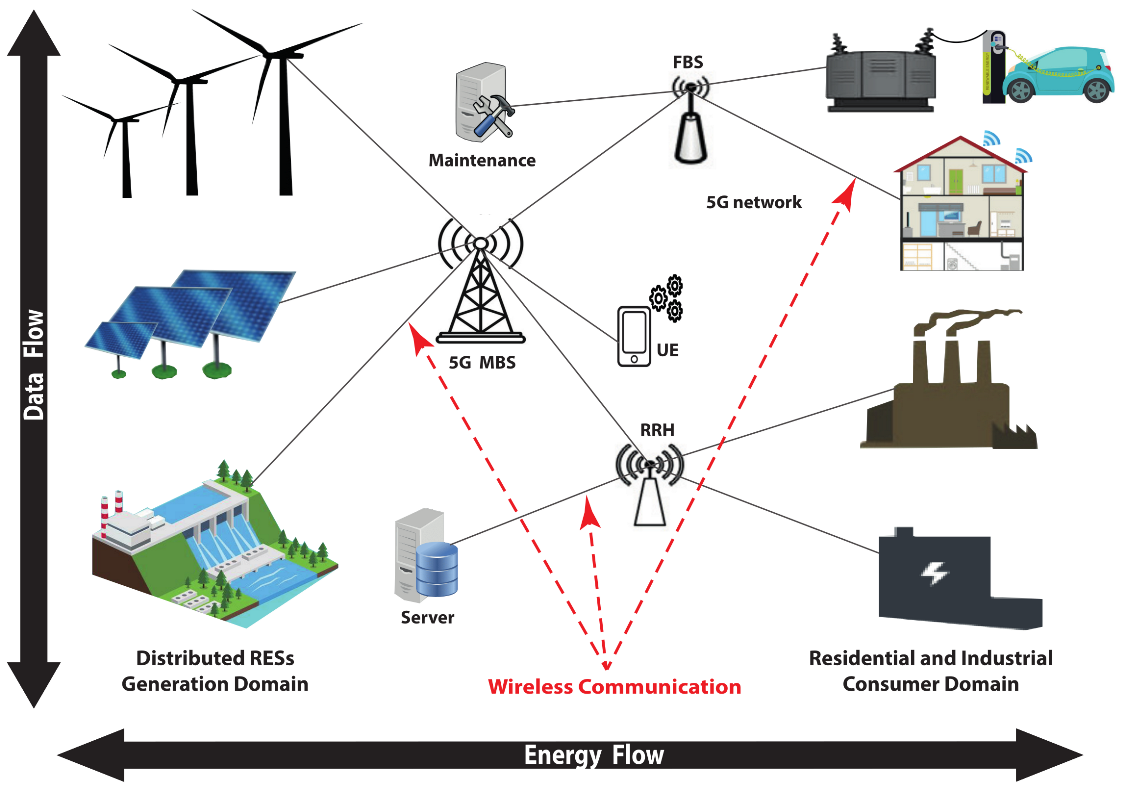
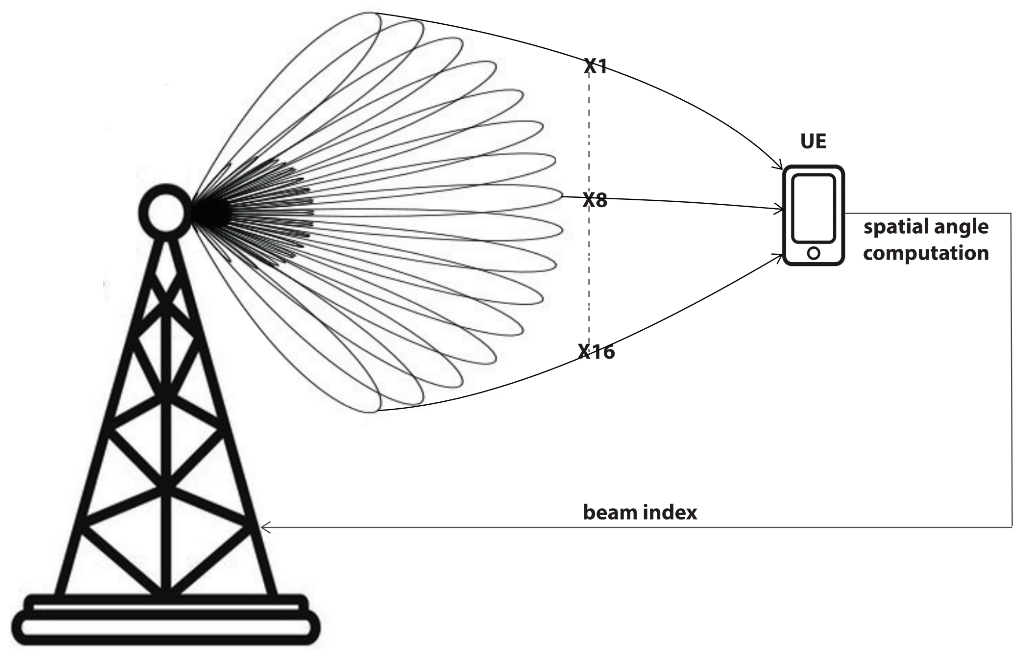
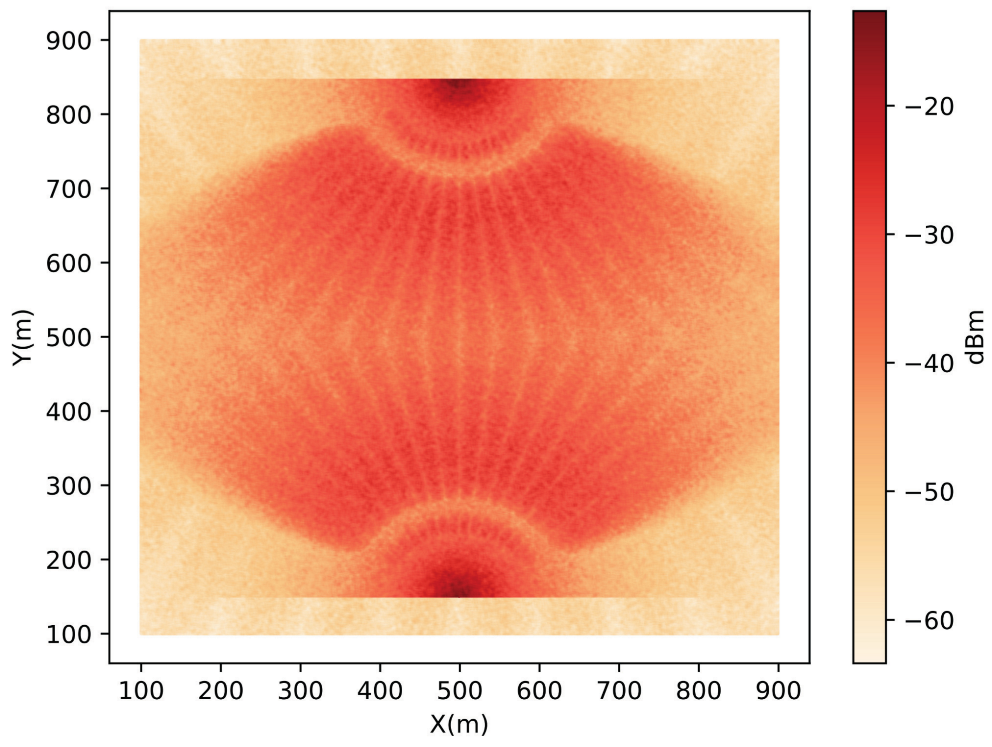

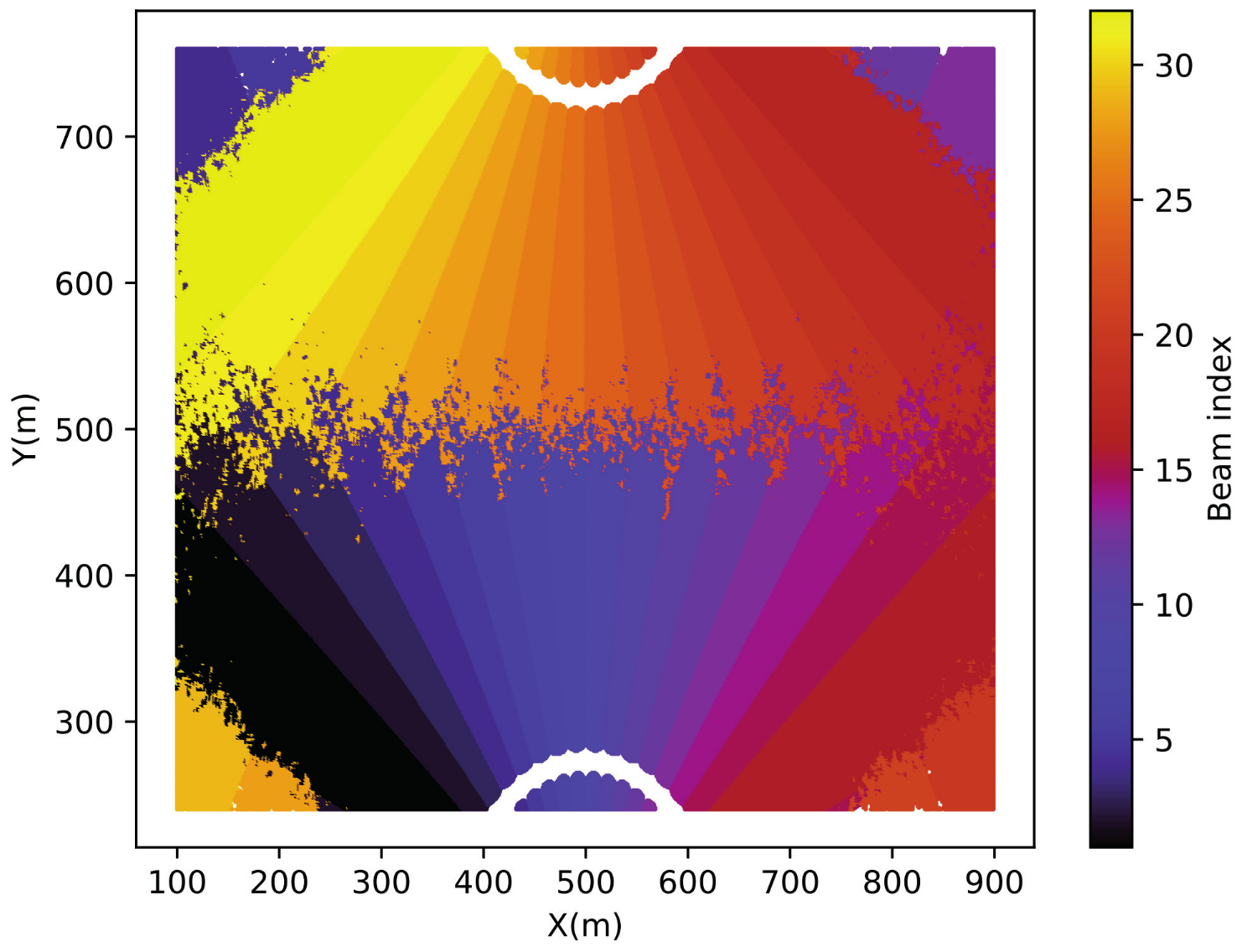
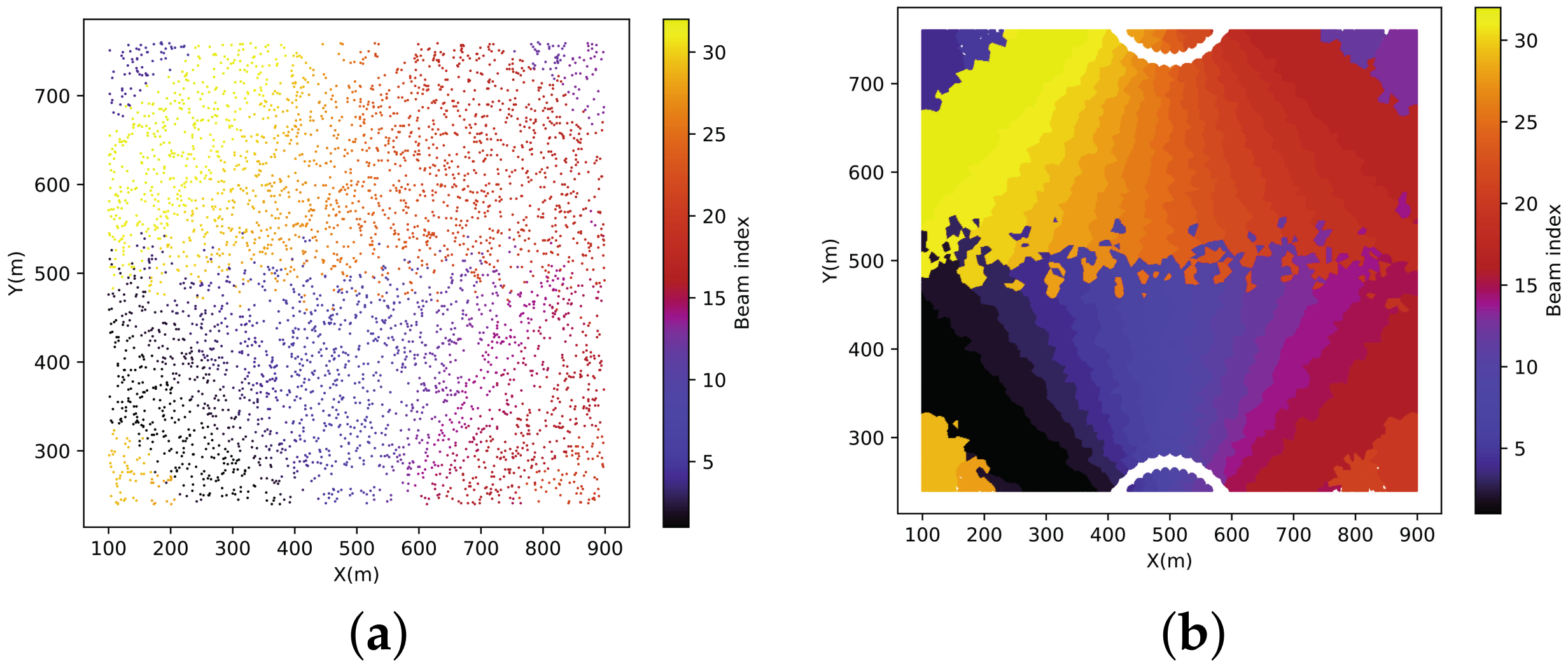
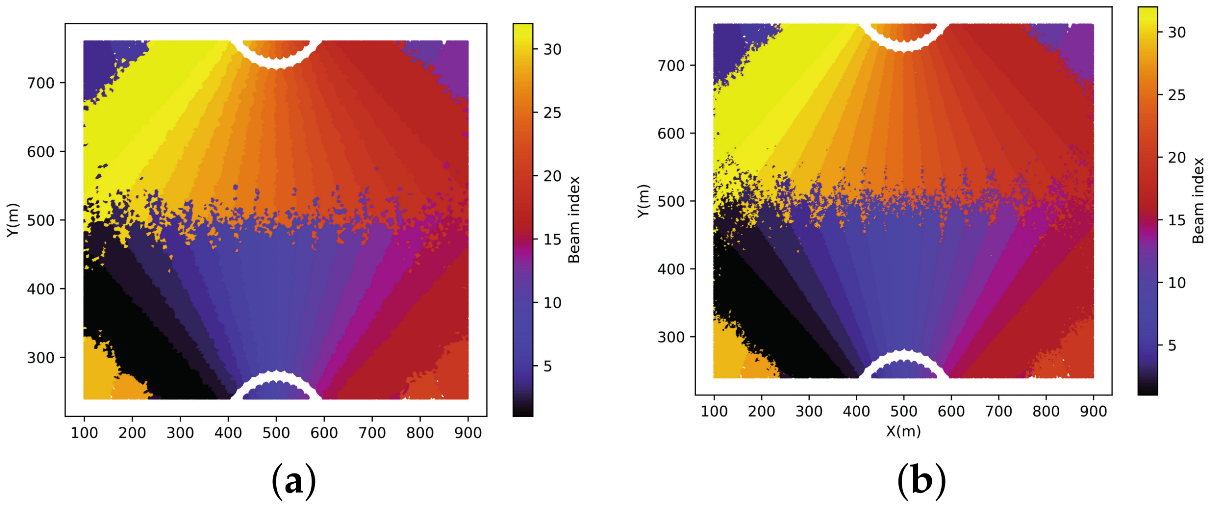
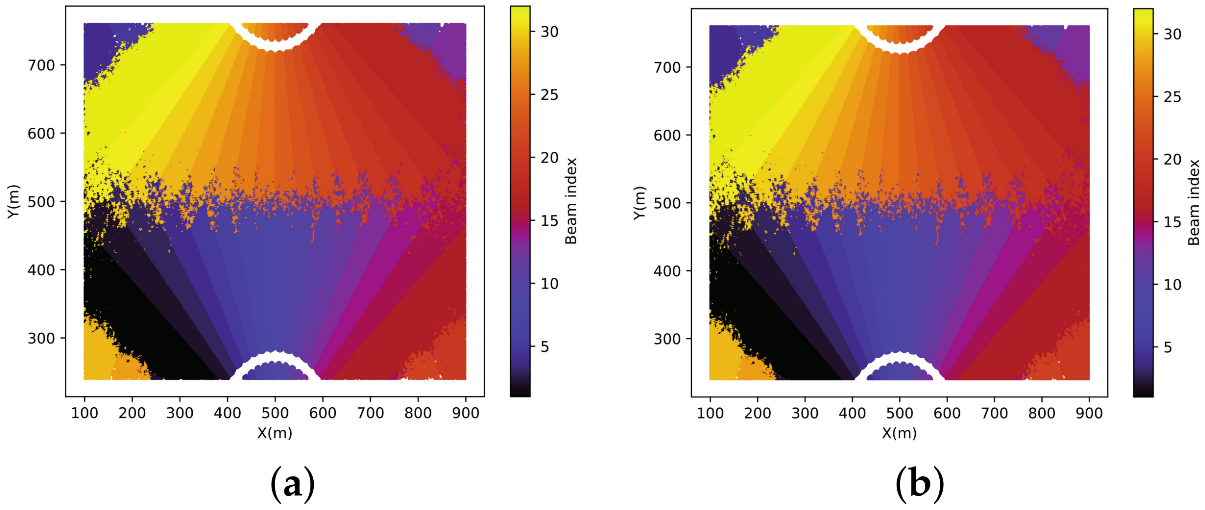
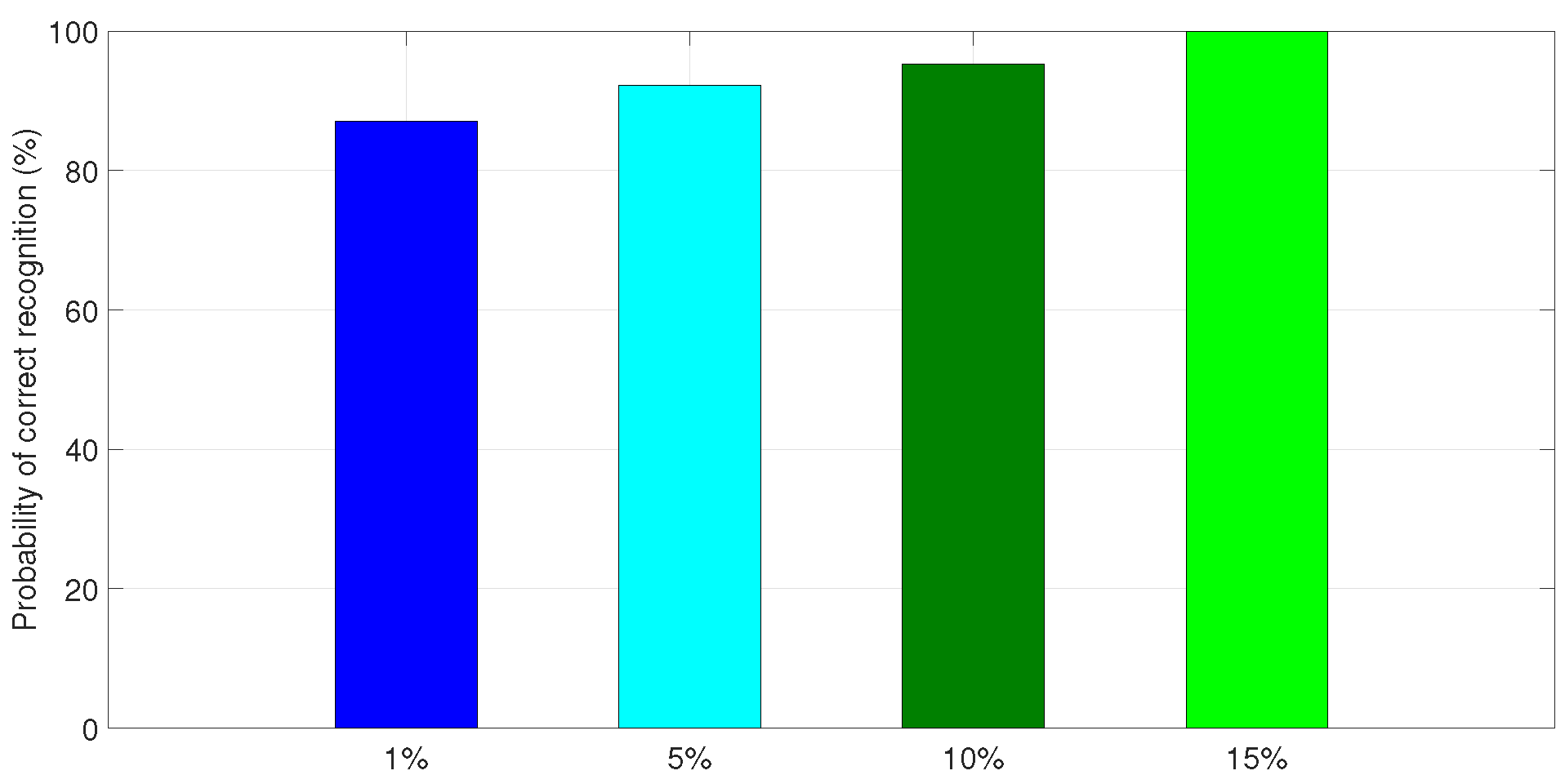
| Network Parameters | Value |
|---|---|
| Number of BSs | 2 |
| Number of beams per BS | 16 |
| BS transmit power | |
| Bandwidth |
| Channel Characteristics | Value |
|---|---|
| Thermal noise per Hertz | |
| Path loss (D in km) | |
| Nakagami-m shape parameter | 5 |
| Shadowing Log-normal | |
| Intersite distance |
| TPR | FPR | Precision | Recall | F-Measure | Class | ||||||
|---|---|---|---|---|---|---|---|---|---|---|---|
| KNN | KStar | KNN | KStar | KNN | KStar | KNN | KStar | KNN | KStar | ||
| 0.972 | 0.976 | 0.002 | 0.021 | 0.971 | 0.745 | 0.972 | 0.976 | 0.971 | 0.845 | 1 | |
| 0.939 | 0.752 | 0.003 | 0.006 | 0.924 | 0.841 | 0.939 | 0.752 | 0.932 | 0.794 | 2 | |
| 0.914 | 0.83 | 0.003 | 0.004 | 0.917 | 0.872 | 0.914 | 0.83 | 0.915 | 0.851 | 3 | |
| 0.928 | 0.73 | 0.003 | 0.005 | 0.926 | 0.869 | 0.928 | 0.73 | 0.927 | 0.794 | 4 | |
| 0.921 | 0.638 | 0.002 | 0.003 | 0.915 | 0.837 | 0.921 | 0.638 | 0.918 | 0.724 | 5 | |
| 0.926 | 0.894 | 0.002 | 0.004 | 0.922 | 0.832 | 0.926 | 0.894 | 0.924 | 0.862 | 6 | |
| 0.914 | 0.768 | 0.002 | 0.001 | 0.902 | 0.938 | 0.914 | 0.768 | 0.908 | 0.844 | 7 | |
| 0.923 | 0.934 | 0.001 | 0.002 | 0.927 | 0.877 | 0.923 | 0.934 | 0.925 | 0.905 | 8 | |
| 0.927 | 0.896 | 0.001 | 0.002 | 0.92 | 0.914 | 0.927 | 0.896 | 0.924 | 0.905 | 9 | |
| 0.916 | 0.91 | 0.002 | 0.003 | 0.911 | 0.868 | 0.916 | 0.91 | 0.914 | 0.888 | 10 | |
| 0.925 | 0.876 | 0.002 | 0.003 | 0.921 | 0.868 | 0.925 | 0.876 | 0.923 | 0.872 | 11 | |
| 0.919 | 0.64 | 0.002 | 0.003 | 0.922 | 0.843 | 0.919 | 0.64 | 0.92 | 0.727 | 12 | |
| 0.939 | 0.69 | 0.003 | 0.003 | 0.933 | 0.91 | 0.939 | 0.69 | 0.936 | 0.785 | 13 | |
| 0.922 | 0.89 | 0.003 | 0.006 | 0.927 | 0.83 | 0.922 | 0.89 | 0.924 | 0.859 | 14 | |
| 0.936 | 0.766 | 0.002 | 0.005 | 0.942 | 0.857 | 0.936 | 0.766 | 0.939 | 0.809 | 15 | |
| 0.978 | 0.966 | 0.002 | 0.02 | 0.973 | 0.739 | 0.978 | 0.966 | 0.976 | 0.838 | 16 | |
| 0.975 | 0.971 | 0.002 | 0.018 | 0.974 | 0.763 | 0.975 | 0.971 | 0.974 | 0.854 | 17 | |
| 0.949 | 0.777 | 0.002 | 0.005 | 0.95 | 0.853 | 0.949 | 0.777 | 0.95 | 0.813 | 18 | |
| 0.923 | 0.892 | 0.003 | 0.007 | 0.924 | 0.825 | 0.923 | 0.892 | 0.924 | 0.857 | 19 | |
| 0.934 | 0.704 | 0.002 | 0.002 | 0.938 | 0.922 | 0.934 | 0.704 | 0.936 | 0.799 | 20 | |
| 0.928 | 0.689 | 0.002 | 0.004 | 0.921 | 0.851 | 0.928 | 0.689 | 0.925 | 0.761 | 21 | |
| 0.921 | 0.821 | 0.001 | 0.002 | 0.926 | 0.872 | 0.921 | 0.821 | 0.924 | 0.846 | 22 | |
| 0.907 | 0.861 | 0.002 | 0.003 | 0.911 | 0.86 | 0.907 | 0.861 | 0.909 | 0.86 | 23 | |
| 0.92 | 0.891 | 0.001 | 0.003 | 0.921 | 0.864 | 0.92 | 0.891 | 0.921 | 0.877 | 24 | |
| 0.916 | 0.872 | 0.001 | 0.001 | 0.923 | 0.948 | 0.916 | 0.872 | 0.92 | 0.908 | 25 | |
| 0.914 | 0.914 | 0.002 | 0.004 | 0.916 | 0.833 | 0.914 | 0.914 | 0.915 | 0.871 | 26 | |
| 0.912 | 0.871 | 0.001 | 0.002 | 0.928 | 0.883 | 0.912 | 0.871 | 0.92 | 0.877 | 27 | |
| 0.927 | 0.707 | 0.002 | 0.004 | 0.923 | 0.837 | 0.927 | 0.707 | 0.925 | 0.767 | 28 | |
| 0.925 | 0.616 | 0.002 | 0.002 | 0.935 | 0.93 | 0.925 | 0.616 | 0.93 | 0.741 | 29 | |
| 0.907 | 0.884 | 0.003 | 0.007 | 0.909 | 0.826 | 0.907 | 0.884 | 0.908 | 0.854 | 30 | |
| 0.924 | 0.795 | 0.003 | 0.006 | 0.926 | 0.837 | 0.924 | 0.795 | 0.925 | 0.816 | 31 | |
| 0.972 | 0.967 | 0.001 | 0.018 | 0.976 | 0.766 | 0.972 | 0.967 | 0.974 | 0.855 | 32 | |
| Avg. | 0.936 | 0.83 | 0.002 | 0.007 | 0.936 | 0.84 | 0.936 | 0.83 | 0.936 | 0.828 | |
Disclaimer/Publisher’s Note: The statements, opinions and data contained in all publications are solely those of the individual author(s) and contributor(s) and not of MDPI and/or the editor(s). MDPI and/or the editor(s) disclaim responsibility for any injury to people or property resulting from any ideas, methods, instructions or products referred to in the content. |
© 2023 by the author. Licensee MDPI, Basel, Switzerland. This article is an open access article distributed under the terms and conditions of the Creative Commons Attribution (CC BY) license (https://creativecommons.org/licenses/by/4.0/).
Share and Cite
Alaerjan, A. Automatic Recognition of Beam Attachment for Massive MIMO System in Densely Distributed Renewable Energy Resources. Sustainability 2023, 15, 8863. https://doi.org/10.3390/su15118863
Alaerjan A. Automatic Recognition of Beam Attachment for Massive MIMO System in Densely Distributed Renewable Energy Resources. Sustainability. 2023; 15(11):8863. https://doi.org/10.3390/su15118863
Chicago/Turabian StyleAlaerjan, Alaa. 2023. "Automatic Recognition of Beam Attachment for Massive MIMO System in Densely Distributed Renewable Energy Resources" Sustainability 15, no. 11: 8863. https://doi.org/10.3390/su15118863
APA StyleAlaerjan, A. (2023). Automatic Recognition of Beam Attachment for Massive MIMO System in Densely Distributed Renewable Energy Resources. Sustainability, 15(11), 8863. https://doi.org/10.3390/su15118863








